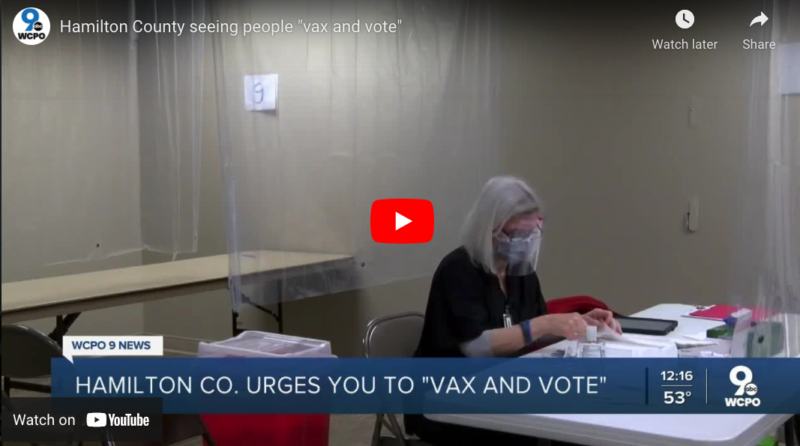Hamilton County, Ohio Organizes a Vax and Vote Program
This spotlight was featured in our ELECTricity newsletter in June 2021. Sign up to receive more success stories from election offices across the country.
Election officials are experts in planning. Thanks to their vast responsibilities—from training poll workers, to educating voters, to implementing contingency plans—election officials know how to make logistical operations run smoothly. In Hamilton County, Ohio, that administrative expertise proved to be useful when the Board of Elections partnered with the Department of Health to provide two services—voting and the COVID-19 vaccine—in one place.
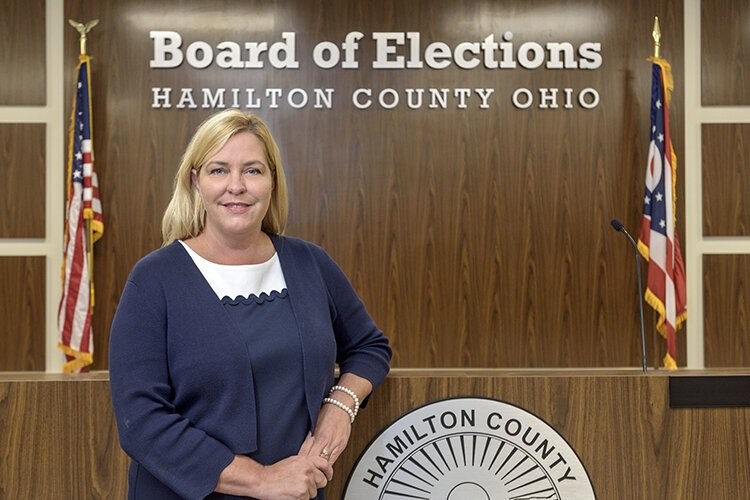
Listening to Voters
Hamilton County, named after founding father Alexander Hamilton, is located in the southwestern corner of Ohio and includes the city Cincinnati. The county is home to nearly 600,000 registered voters. And the Board of Elections makes an effort to listen to feedback from each of them.
During early voting in the 2020 presidential election, a voter wrote a comment on the election office’s Facebook page: “Do you think you would consider managing the Covid vaccine when it becomes available? My money says you would do an awesome, efficient job!” When Sherry Poland, Director of the Hamilton County Board of Elections, first read that comment, she thought that she should leave vaccine distribution to the health professionals. But as she thought about it, she realized that her team was well positioned to share resources and knowledge. If they could run an organized election during a pandemic, why couldn’t they also help to administer the vaccines? So thanks to one voter’s suggestion, the Vax and Vote program was born.
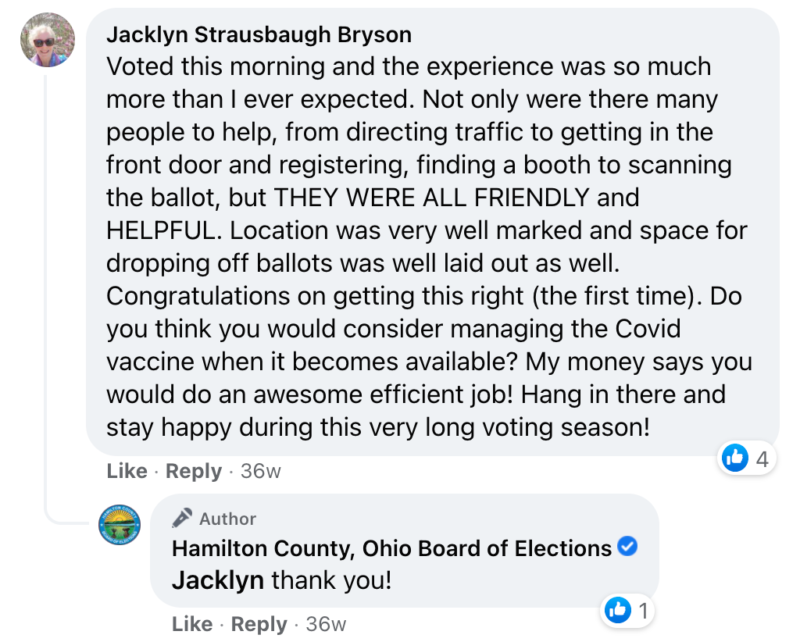
Implementing the Vax and Vote Program
In January 2021, The Board of Elections offered to let the health department use their rented voting annex. The 15,000 square foot building had plenty of infrastructure in place, including parking and access to public transportation. Sherry and her team also offered to provide logistical support. The elections staff met with the health department to discuss what they would need for vaccine distribution to be successful. This included access to the facility, signage, tables, chairs, storage, and janitorial services. Sherry says, “Election officials are planners, so in terms of logistics, the health department staff learned a lot.”
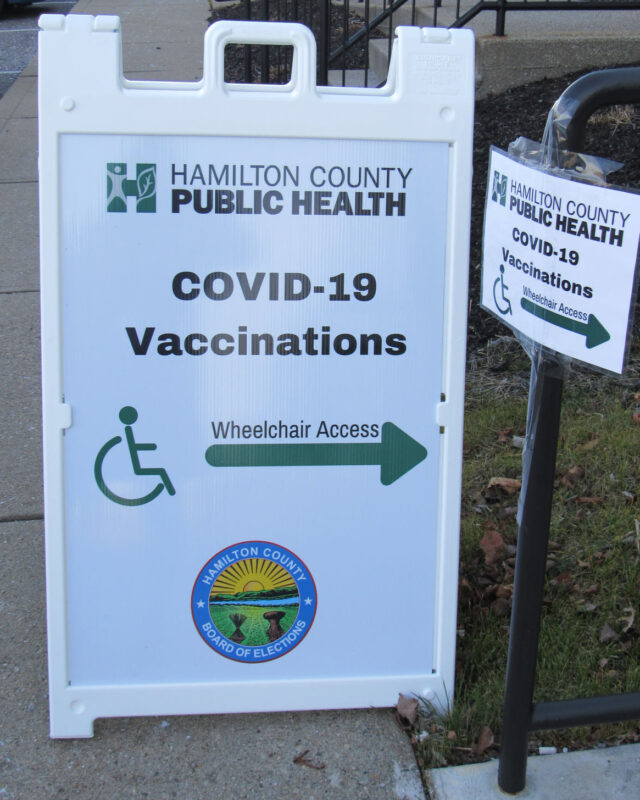
that they could receive the COVID-19 vaccine.
For the first few months, the annex was dedicated solely to vaccine distribution. But the Board of Elections had an upcoming May primary election for about half of the county, and needed to open up the building for voters. Together with the health department, they configured the space so that people could take advantage of both opportunities—voting and receiving the COVID-19 vaccine—in one trip. Throughout the early voting period, one half of the annex was marked for COVID-vaccine walk-ins, and the other for voting. Those who wished to receive the vaccine went into the health department section first, before moving to the voting queue. “It was a one-stop-shop of sorts,” says Sherry. “Our poll workers and the health department staff worked closely to ensure the success of day-to-day operations, sharing resources and making the adjustments to accommodate a high volume of people getting the vaccine.”
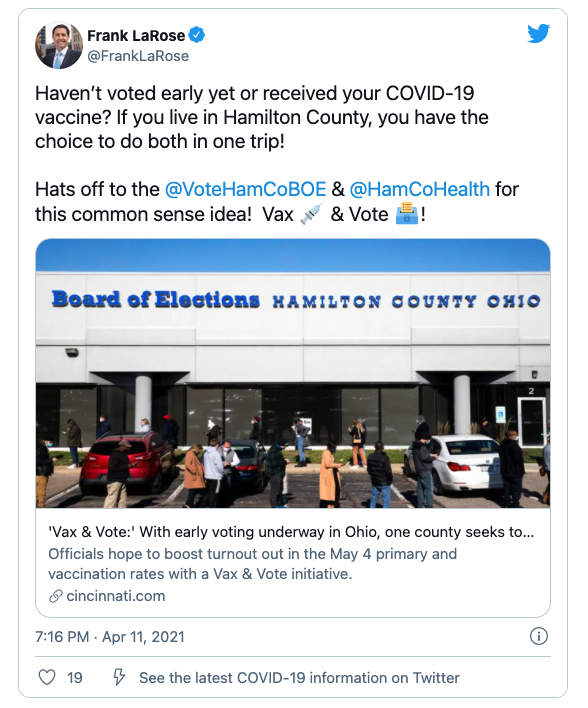
Saving Resources and Reducing Costs
To inform voters of the Vax and Vote program, the Board of Elections sent out a press release, conducted radio and TV interviews, and used social media. Thanks to these efforts, about 20% of early in-person voters participated. That’s roughly 8,400 voters who were able to receive the COVID-19 vaccine while voting. Sherry reflects, “Vaccinated voters were impressed by how quickly and efficiently the operation ran. The appreciation from the voters to the staff for being there during the pandemic to provide this service was all-embracing.”
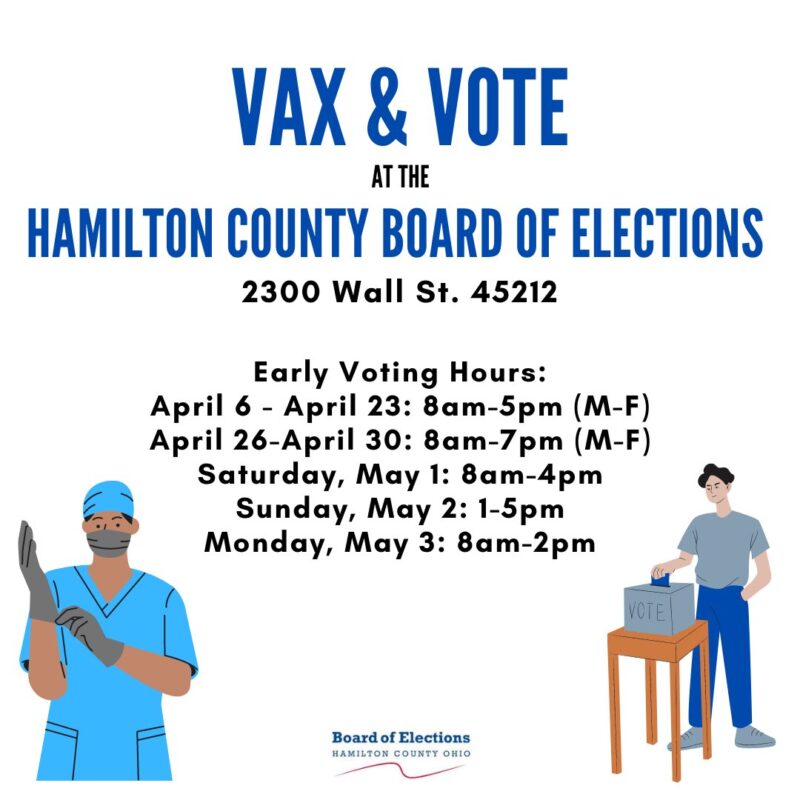
The Vax and Vote program made voters’ lives easier, and it was a win-win for taxpayers and county departments. Sharing knowledge, resources, and physical spaces is a great option to streamline processes and reduce operational costs. “Hopefully, the success of utilizing the annex opens the door for future collaborations with other county agencies,” says Sherry.
This initiative also helped the Board of Elections save money on voter education costs. The program earned positive attention from the media in Hamilton County, and Sherry used that exposure to conduct inexpensive voter education. In a TV interview about the program, Sherry was able to promote a primary election, explain how to check eligibility, and list the early voting schedule. Election offices that don’t have enough funds for mailers, radio or TV ads can use positive press from programs like this to share information with voters. And of course, it’s a great way to boost voter turnout, especially for an odd-year primary election.
Collaborating with Health Departments to Reduce Structural Barriers
Hamilton County wasn’t the only election office to partner with their health department during the pandemic. Other jurisdictions created similar programs to save voters’ time and the county’s resources using CTCL’s COVID-19 grant response funding. In 2020, Hinds County, Mississippi and Bexar County, Texas offered free COVID-19 testing to all of their poll workers. In Fulton County, Georgia, voters had the option to receive a COVID-19 test while voting. And election officials in Alachua County, Florida helped poll workers receive the COVID-19 vaccine. Some of these jurisdictions used CTCL’s COVID-19 Response grant funding to help offset the costs.
These partnerships are effective both during crises like pandemics and during periods of relative calm. Since at least 1999, states have implemented vote and vaccinate programs to administer flu shots at polling sites. Such initiatives can help boost vaccination rates—particularly for populations that have traditionally lacked access to regular immunization. Vax and Vote programs can play a role in reducing the structural barriers that vulnerable populations have faced when trying to receive the COVID-19 vaccine. Residents with poor internet connection or low computer literacy don’t have to struggle to make an appointment online. Low income families with caregiving responsibilities, or who can’t afford to take time off work, can walk in at a time that works best for them. And because polling sites are typically accessible via public transportation, those who don’t own cars can get to them easily.
Additional Resources
If you’d like to learn more about how to set up a similar program in your jurisdiction, Vote & Vax’s resource guide is a great place to start. It’s written for health providers, but several key points are helpful for election officials too, such as:
- Choosing the right location
- Preparing your site(s)
- Publicizing your event
- Measuring your effectiveness
- Documenting your experience
And if you’d like to ask Sherry any additional questions about her experience organizing the Vax and Vote program in Hamilton County, you can reach out to her at [email protected]
